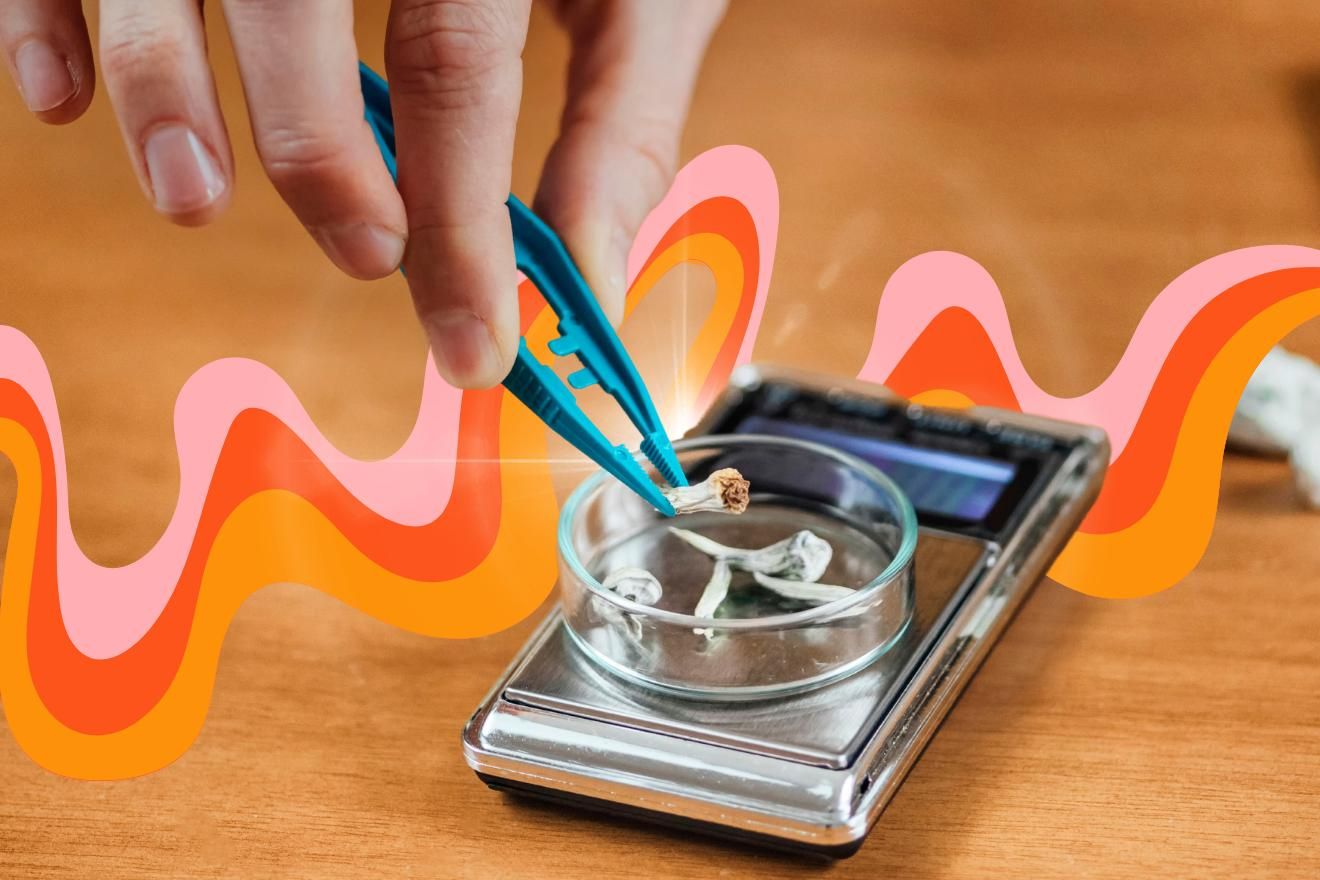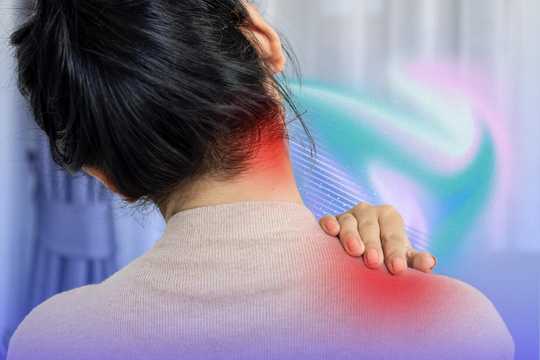Psilocybin microdosing refers to the practice of taking sub-perceptual doses of psilocybin mushrooms. ‘Sub-perceptual’ means that the dose is low enough that no classic psychedelic effects occur. When you take a microdose, you shouldn’t experience any visual distortions, for instance.
“A psilocybin microdose is typically 5–10% of a recreational dose of psilocybin mushrooms.”
— Jim Fadiman, The Psychedelic Explorer’s Guide
However, the practice of psilocybin microdosing has grown in popularity due to its purported benefits. Microdosers claim a wide range of benefits, which we will detail in this article. We also want to provide some information on the research on microdosing, which gives us a different picture of microdosing’s effects. Finally, we will explore the potential risks of psilocybin microdosing (which remains an under-researched topic).
The Basics of Psilocybin Microdosing
A psilocybin microdose is typically 5–10% of a recreational dose of psilocybin mushrooms. The exact dose someone may prefer will depend on several factors, including the species or strain of psilocybin mushroom (which vary in potency) and personal sensitivity.
For simplicity’s sake, we can take a medium-strength mushroom, Psilocybe cubensis, as an example. A commonly used strain of this species is the Golder Teacher mushroom. For most users, 1–2 grams of this type of mushroom is enough to induce psychedelic effects, such as perceptual changes, laughter, euphoria, and introspection. A microdose, then, would be 0.1– 0.2 grams.
You can take a microdose in a variety of ways. You can simply consume the dried mushroom as it is. You can also powderize your mushrooms and then weigh the dose. This method can yield more reliable effects since it evenly distributes the psilocybin and psilocin in the mushroom powder. In contrast, concentrations of psychedelic compounds can vary throughout the mushroom when you use a whole one. There might be more psilocybin in the cap than in the stem, for example. One can take psilocybin mushroom powder as it is, mix it into a drink (e.g., tea, coffee, smoothie), or place it into capsules.
The Purported Benefits of Psilocybin Microdosing
Microdosers claim to experience a range of benefits from microdosing psilocybin mushrooms.
Mental Health Benefits
One of the most common reasons why people microdose is to improve their mental health, without (or in addition to) taking bigger doses, or macrodoses. Anecdotal psychological benefits include reductions in depression, generalized anxiety, social anxiety, and rumination. Many users also report increases in positive emotions such as joy, contentment, and peacefulness.
Cognitive Benefits
For some users, microdosing feels like a nootropic, meaning they feel it enhances cognitive functions. The purported cognitive benefits of psilocybin microdosing include improvements in alertness, focus, concentration, mindfulness, and creativity. Many users enjoy these felt benefits without having to deal with the side effects (e.g., jitteriness and sleep disruption) that come from stimulant-based nootropics (e.g., caffeine and prescription stimulants).
Physical Benefits
Some of the other benefits reported by microdosers are physical in nature. These might include increases in energy and stimulation, as well as reductions in chronic pain (which various physical health conditions can tie to).
Research on Microdosing: Does it Back Up the Anecdotal Claims?
Research on LSD Microdosing
Despite microdosing being a relatively recent trend, some studies on its effects exist. Other studies are also in the pipeline. Most double-blind, placebo-controlled studies on microdosing have involved LSD. This approach means that researchers compared the effects of tiny doses of LSD with those of a placebo, with neither the participants nor the researchers knowing whether they were administering the LSD or the placebo. In a review of this research, published this year, the authors state:
“The existing psychopharmacological trials of microdosing LSD in healthy volunteers demonstrate mild effects of LSD on mood, sleep, social cognition, reward response, and pain perception. Some of these effects might facilitate treatment of psychiatric disorders, but the findings need to be replicated and extended to clinical and more diverse populations. Thus far, there has been little support for claimed benefits of improved cognition and creativity, but these negative findings are limited by the sensitivity of the measures available. Future clinical trials to support users’ anecdotal claims and to explore clinical applications are needed.” [1]
Research on Psilocybin Microdosing
But what about the research on psilocybin microdosing? A longitudinal study on microdosing psilocybin found it improved mental health compared to a control group. After a month of microdosing, participants experienced mild to moderate reductions in depression. However, researchers found no evidence of improvements in cognitive function (e.g., focus and memory). [2]
“One of the most common reasons why people microdose is to improve their mental health, without (or in addition to) taking bigger doses, or macrodoses.”
Nevertheless, it’s important to keep in mind that this was a naturalistic, observational study. Researchers composed the control group of non-microdosers. They weren’t taking a placebo under controlled, double-blinded, randomized conditions. This lack of blinding can affect the reliability of the results. It makes it hard to know if the benefits of microdosing reported by participants are due to the placebo effect.
The Placebo Effect and Methodological Limitations
In a 2022 double-blind, placebo-controlled study, researchers found no changes in terms of creativity, mental health and well-being, and cognition. In fact, in some cognition tasks, microdosing negatively affected performance. [3] It’s worth noting, nonetheless, that the study involved giving participants 0.5 g of dried psilocybin mushrooms. Many users would consider this amount too high to be a microdose.
According to neuroscientist Zeus Tipado, the claimed benefits of microdosing are most likely down to the placebo effect. He refers to a double-blinded, placebo-controlled study by Imperial College London researchers, which involved both LSD and psilocybin microdoses [4]:
“People self-reported feelings of decreased depression and anxiety, and a reduction of stress-related behavior in both the placebo and microdosed psychedelic. There was no statistical difference. The belief that participants may have cognitive benefits from the study was enough for people to experience the feelings they anticipated. While we can write the placebo effect off as ‘it’s all in your head,’ it’s actually a strong testament to how much control humans have over their own cognitive and behavioral regulation.”
However, we need to highlight the study’s methodological limitations. This study was part-controlled, part-observational. While this generates more reliable data than purely observational studies, it produces less reliable data than data from controlled clinical trials. The authors state, “A key limitation of the present study is the lack of verification of the nature, purity, and dosage of the psychedelic substance used for microdosing.”
Does Psilocybin Microdosing Involve Any Risks?
The potential risks of microdosing are more under-researched than the benefits. We know that single doses of psychedelics, in both microdoses and macrodoses, are physically safe when taken now and again. This safety is because classic psychedelics like psilocybin are physically non-toxic. They don’t cause damage to any of the body’s organs. However, less is known about the safety of chronic use of tiny doses of psychedelics. Microdosing typically involves taking a psychedelic 2–3 times every week, sometimes over a period of several months.
One of the main concerns that psychedelic researchers have is related to heart health. This concern arises because classic psychedelics like psilocybin activate the 5-HT2B receptor. Chronic use of drugs that activate this serotonin receptor links to valvular heart damage. There is a worry, then, that chronic microdosing might have a similar effect. Nonetheless, long-term studies on microdosing are lacking, given that this is a relatively new practice. We will need research to establish whether—and to what extent—long-term microdosing is harmful. However, it may be possible to minimize heart health risks with specific parameters, such as limiting the duration of one’s microdosing regimen.
Follow your Curiosity
Sign up to receive our free psychedelic courses, 45 page eBook, and special offers delivered to your inbox.References
- Murphy, R.J., Muthukumaraswamy, S., and de Wit, H. (2024). Microdosing Psychedelics Review: Current Evidence From Controlled Studies. Biological Psychiatry: Cognitive Neuroscience and Neuroimaging, 9(5), pp. 500–511.
- Rootman, J.M., Kiraga, M., Kryskow, P., Harvey, K., Stamets, P., Santos-Brault, E., Kuypers, K.P.C., and Walsh, Z. (2022). Psilocybin microdosers demonstrate greater observed improvements in mood and mental health at one month relative to non-microdosing controls. Scientific Reports, 12, Article: 11091.
- Cavanna, F., Muller, S., de la Fuente, L.A., Zamberlan, F., Palmucci, M., Janeckova, L., Kuchar, M., Pallavicini, C., and Tagliazucchi, E. (2022). Microdosing with psilocybin mushrooms: a double-blind placebo-controlled study. Translational Psychiatry, 12, Article: 307.
Szigeti, B., Kartner, L., Blemings, A., Rosas, F., Feilding, A., Nutt, D.J., Carhart-Harris, R.L., and Erritzoe, D. (2021). Self-blinding citizen science to explore psychedelic microdosing. eLife, 10, Article: e62878.






